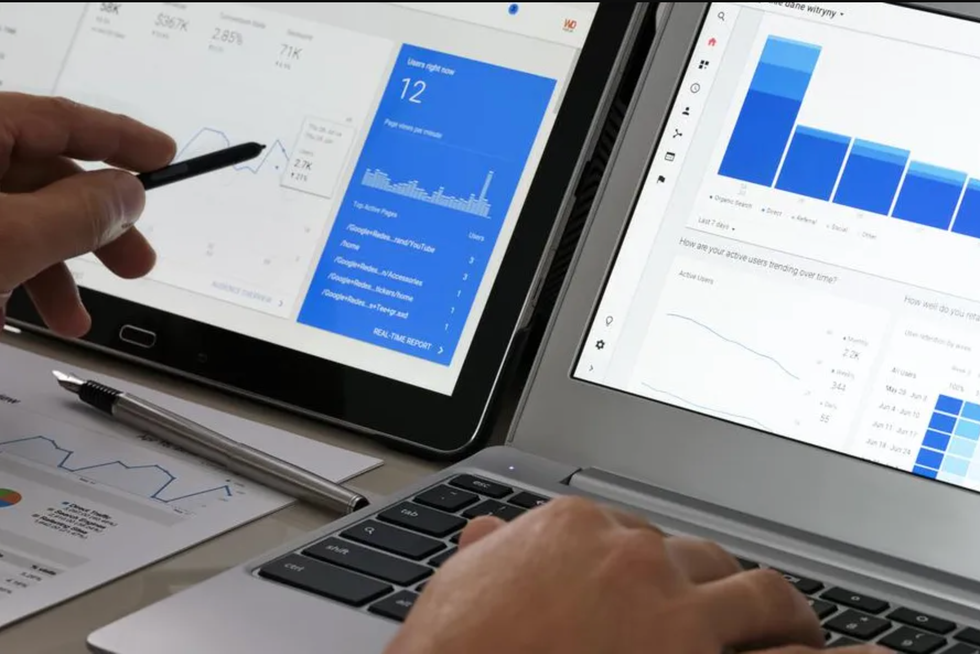
As a marketer, it is important to connect your work to business results. When you do, you will have influence, relevance, and credibility throughout the organization.
Here are five marketing metric segments that truly matter and will impact your companies bottom line.
Top Line Metrics
Revenue: Income generated from normal business operations and includes discounts and deductions for returned merchandise. It is the top line or gross income figure from which costs are subtracted to determine net income. Source. When tracking revenue, you should be looking at where your leads are coming from and how much profit is coming from those sales.
Return on Marketing Investment (RoMI): Measures the revenue generated by a marketing campaign compared to the cost of running it. RoMI formula = (attributable revenue-campaign investment) / (campaign investment) = ROI (over X time period). This metric shows how specific campaigns are performing and contributing to company growth.
Customer Lifetime Value (CLV): Expected return during the life of an average customer. CLV formula = lifetime value x profit marking. CLV is a prediction of the value your relationship with a customer can bring to your business. Understanding the importance of CLV can help marketers make decisions across customer's entire life cycle rather than single interactions.
Website Metrics

Total Website Traffic: This refers to the overall volume of users visiting your website. Web traffic is measured in visits and is a common way to measure online effectiveness at attracting an audience. Total website traffic is a strong indicator of content performance.
Referral Traffic: Refers to visitors who come to your website from links that appear on a different site without going through a search engine. Referral Traffic formula = (traffic coming from other sites / total traffic) X 100. The benefits are: 1) Having the right backlinks leads to increased website referral traffic; 2) Referral traffic sends potential buyers to your site from other sites that are aligned with your target audience. You can optimize your content based on what these customers are interested in; and 3) People will interact with your website as they will view it as a trusted website since it was referred to them. As a result, search engines will trust your content helping you rank better.
Conversion Rate: A conversion rate is the percentage of visitors to your site that completes a desired goal (i.e., call to action, email sign-up, view video, etc.) out of the total number of visitors. Basically any action that brings qualified leads further into the funnel until you make a sale. Conversion Rate formula = (total number of conversions / total number of people visiting your landing page) * 100. Conversion rate tracking helps you make data-driven decisions, identify top performing keywords, indicate strength of ad copy, highlight website improvements, and optimize for better improvements.
SEO Metrics

Organic Visibility:
- Organic Keyword Ranking: Where your page is ranked for specific keywords in search results. This can have an impact on your site traffic, lead generation, and conversions. 75% of users never scroll past the first page of search results.
- Organic Traffic: Represents all of the visitors your site is attracting from organic search. Visitors arrive at your site by typing a certain keyword into a search engine.
- Organic Impressions: Organic reach refers to the number of unique people who saw your content organically in the Facebook News Feed.
Organic visibility is very important as it is targeted. Users who visit your site from organic search engine results have specific needs and are more likely to convert.
Cost Per Acquisition (CPA): Measures the aggregate cost to acquire one paying customer on a campaign or channel level. CPA formula = (marketing costs + sales costs) / $ of new customers. CPA is an important metric as it gives you an estimate of how much your new customers are costing you and helps you determine whether your strategy needs revisions.
ROI: "The average business drives 53% of its traffic through organic search." Source. It's critical to understand the financial impact that SEO has on your business. Here is a good SEO ROI calculator to identify the financial impact. ROI can help identify what is working vs. what is not in addition to prioritizing SEO efforts.
Paid Advertising Metrics

Click-Through Rate (CTR): Number of clicks your ad receives divided by the amount of views your ad receives. CTR gauges how well your ads, listings, and keywords are performing. This is an important metric as it helps you understand your customer. It shows you what is working vs. what isn't when trying to reach your target audience.
Conversion Rate: Rate at which users are taking the desired action post-click. Conversion rates are calculated by taking the total number of converted users and dividing it by the overall audience size, then converting into a percentage. The conversion rate tells you how well you encourage your traffic to perform a desired action.
Cost Per Conversion (CPC): How much it actually costs to obtain a customer who will make a successful conversion. A conversion can take many different forms, but could be a purchase, email sign-up, form submission, or watching a video. Cost Per Conversion formula = total cost for clicks / number of conversions. Cost per conversion is one of the easiest ways to figure out how well your ad campaigns are doing.
Marketing Qualified Leads (MQL): A lead who has indicated interest in the brand and is most likely to become a customer compared to other leads. Indicators include such actions as content downloads, website visits, or inbound inquiries. Marketing qualified leads are important because these leads become customers.
Social Media Metrics

Audience Growth Rate: How quickly your brand increases followers on social media. Growth Rate Percentage formula = (New Followers in Period + Total Audience on Platform) X 100. By tracking audience growth rate, you can see how well a social media post or a marketing campaign has performed allowing you to repurpose, revise, or revoke for future strategies.
ROI
- Referrals: How users land on your website. In Google Analytics, you'll see the traffic sources. Looking at traffic from social media alongside traffic from other channels will show you the impact social has on your site traffic.
- Conversion Rate: Calculates the number of visitors who click through your social media post to your website page and take action on that page against total visitors on that page. Conversion Rate formula = (conversions / total clicks) x 100. The goal is to convert visitors to your website into paying customers through social media posts with call to actions, bringing them closer down the funnel to make a sale.
A number of tools and technologies exist today to develop dashboards that show your marketing results tied to the business results in order to share with c-suite. Measuring these key metrics should be an integral part of your marketing strategy. By doing this, you will be able to close the credibility gap to command respect throughout the organization in order to be seen as a revenue and growth department.
- 5 Marketing Lessons: What I Learned From Surfing - Work It Daily ›
- 6 Tips On B2B Marketing Communications - Work It Daily ›
- 7 Marketing Resume Mistakes To Avoid - Work It Daily ›
- 5 Common Marketing Interview Questions And Answers - Work It Daily ›
- 11 Signs Your Operations Are Undermining Your Marketing Efforts - Work It Daily ›

 Bigstock
Bigstock Bigstock
Bigstock Bigstock
Bigstock


